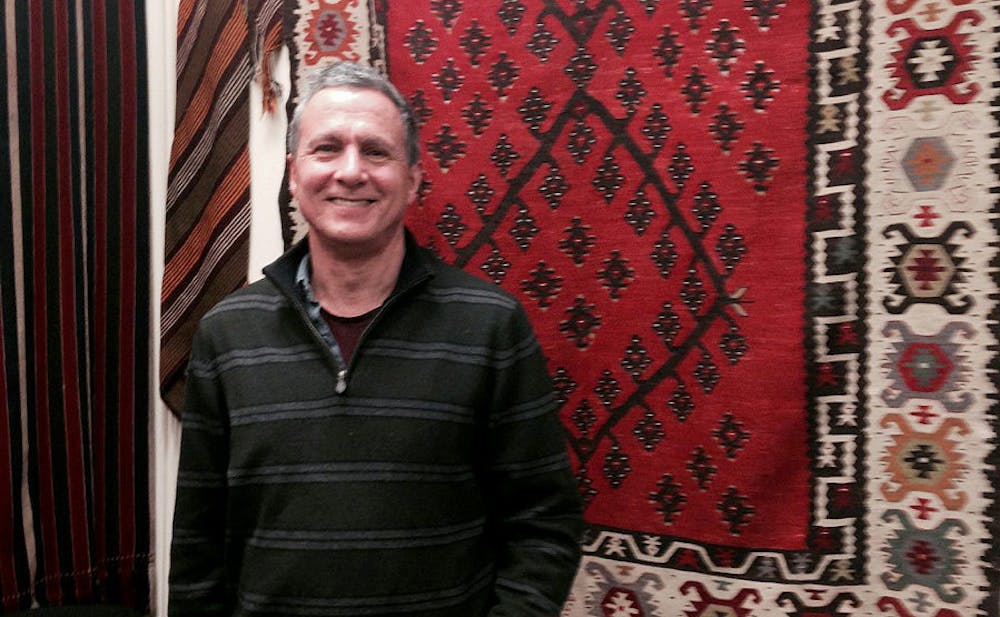“What was the inspiration for your upcoming concert?” I questioned professor and performer Randall Love, putting on my best professional practice. I had heard many things, about his passion for piece instruments, his outstanding teaching practices that had led his students to achieve awards, and his many years performing and recording piano pieces. However, my formality was unneeded in what became an informal afternoon of stimulating discussion and musical pieces of the repertoire for Saturday. Dr. Love opened the door and immersed me in his world of mazurkas, magyars and colorful artwork that covered his studio office.
Based off of the concert’s title: “Mazurkas and Magyars”, I had a vague idea the music would be Eastern European. Mazurka is the name of a Polish folk dance with a distinctive accent on the third or fourth beat, and Magyar refers to both a branch of Hungarian people and their language. Magyars, in the sense meant by Love, are folk songs sung by the Magyar people that were dictated by Bartok through listening and spending time with Hungarian peoples in the 1920s. These are closest to the prototype of most people’s understanding of “folk” music.
After demonstrating several snippets of lyrical lines for me, he declared, “You can just imagine there [are] words that go with each line, can’t you?” When I asked what words he imagined had coupled that piece, he responded with the comical, “Oh it has to be love. Either that or losing one’s goat.” Conveniently the music book provided lyrics in the back and, after regaining our composure from a fit of giggles, the two of us looked through the words, finding elements of love, longing and remorse. Love plans on reading clips of the accompanying lyrics at the concert, so I will withhold from giving away whether the goat made it out alive.
For the other half of the concert, Love will focus on the slightly more classical sounding mazurkas. Chopin did not directly dictate Polish folk songs; rather, he mimicked the folk style while keeping his particular discipline. As Chopin was born in Poland and then left for Paris, his mazurkas represent a sort of reconnection to and reinstatement of his heritage. Love shared that he has pictured one particular mazurka as depicting the Polish nobility, emanating pride and dignity. I believe many students at Duke could relate to Chopin’s attempt to reach retroactively or beyond the culture of our daily life in the Gothic Wonderland and the resources we’ve been blessed with on this campus.
Watching Love’s fingers dance across the keys, I was still curious as to how he, in the words of Music Department Chair Professor Jane Hawkins, “was going to connect the music to the textiles, and greatly excited to see how he plans on doing so.”
When I inquired, instead of setting his fingers to the keys or replying with a coined response, Love directed my focus a large hand-woven quilt covering a panel of the wall across from the piano. Decorated with row-by-row of identical diamonds varying in red, white and blue shades, the quilt had a subtle beauty, worn but impressively intricate and layered. As Love explained, the blue dye was crafted from indigo and the red from other roots, and a villager sewed each stitch. The music, the folk songs, mimicked the subtle changes within a constant design. Juxtaposing this explanation, Love settled into the introduction of one of the magyars. The first three lines repeated the same melody with slight key changes. The lines were the triangles, the keys the stitches, his fingers like those of the artisans.
As Love and I were wrapping up our time together, we stood up to admire the quilts and art in his office more closely. Love offered a self-deprecating joke about his quirkiness as a pianist with folk art instead of marble busts of Bach decorating his personal space, to which I replied, I liked these much better. With quilts and tapestries, you know how much time and effort was put into that piece.
“Exactly.”
Come hear Randall Love weave his musical tapestry in the self-selected intimate performance setting, Nelson Music Room, Sat., Feb. 28 at 8 p.m.
Get The Chronicle straight to your inbox
Sign up for our weekly newsletter. Cancel at any time.

